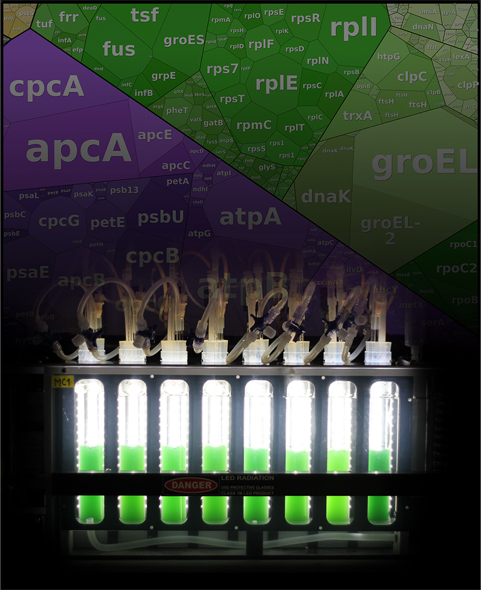The constraints of cyanobacterial growth
How is cyanobacterial growth constrained by abundance of light and CO2? A new study, led by SciLifeLab researcher Paul Hudson (KTH), delves deeper into the question.
Using shotgun proteomics in the lab of Mathias Uhlén (KTH), also a SciLifeLab researcher, the group were able to examine the cyanobacteria proteome and how it reacted to variations of light and CO2. The bacteria’s proteome was dominated by proteins devoted to harvesting these substrates, so much so that the ribosomal proteins were in rather low abundance. Paradoxically, however, the results suggest that a reduction in the amount of light harvesting proteins could actually allow the bacteria to grow faster.
“This work showed us that carbon fixation and light harvesting proteins are often co-regulated, which suggests common transcription factors or signal molecules. Other findings can guide engineering efforts to transform cyanobacteria as ‘cell factories’”, says Paul Hudson. “For example, reducing the light harvesting proteins not only free up proteome space for other metabolic proteins, but also allow light to penetrate further into the cell culture, improving overall productivity.”
More information: scientific paper in Cell Reports.

Image: the small bioreactors the researchers used to cultivate the cyanobacteria, in front of a montage of the proteome of the cyanobacteria, where each protein ‘block’ is represented by the abundance of that protein. Photo credit: Michael Jahn (KTH), first author of the paper.




